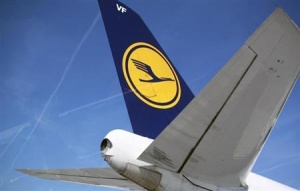Lufthansa to employ biokerosene mixture on Oslo flights

Starting this year the Lufthansa Group will be fuelling their aircraft at Oslo airport with a biokerosene mixture.
The group recently became the first airline group to sign this kind of contract with the Norwegian oil company, Statoil Aviation.
The company is thus pushing forward along the path of research, testing and use of alternative fuels that it started over four years ago.
Beginning March 2015 and lasting for one year, Statoil will feed 2.5 million gallons of sustainably produced, certified biofuel into the tanks at Oslo airport.
The approximately 5,000 flights the Lufthansa Group - which includes Lufthansa, Swiss, Austrian Airlines, Germanwings, and Brussels Airlines - operates from the Norwegian capital will then be flying on a biokerosene mixture.
ADVERTISEMENT
Oslo airport is the world’s first large commercial airport to offer continuous provision of biofuel over a long period and to fuel aircraft with biokerosene directly from its hydrant system.
For the Lufthansa Group, this is the next step from its previous test flights, made as part of the recently concluded burnFAIR project, toward the use of alternative fuels in regular flight operations.
In 2011, Lufthansa was the first airline in the world to run regular flight operations with a biokerosene mixture by operating an Airbus A321 between Frankfurt and Hamburg for half a year as part of the project.
The long-term testing was accompanied by detailed emissions measurements and research into production processes and biomass availability.
“Climate-friendly aviation is an important aim of the Lufthansa Group,” explained a statement from the German flag-carrier.
“To this end, the group is investing in modern, low-consumption aircraft and is continuously improving the fuel efficiency of its flights.
“As a supplement to, and as a long-term replacement for kerosene made from crude oil, biofuels offer new perspectives on improving the aviation industry’s carbon footprint.”

